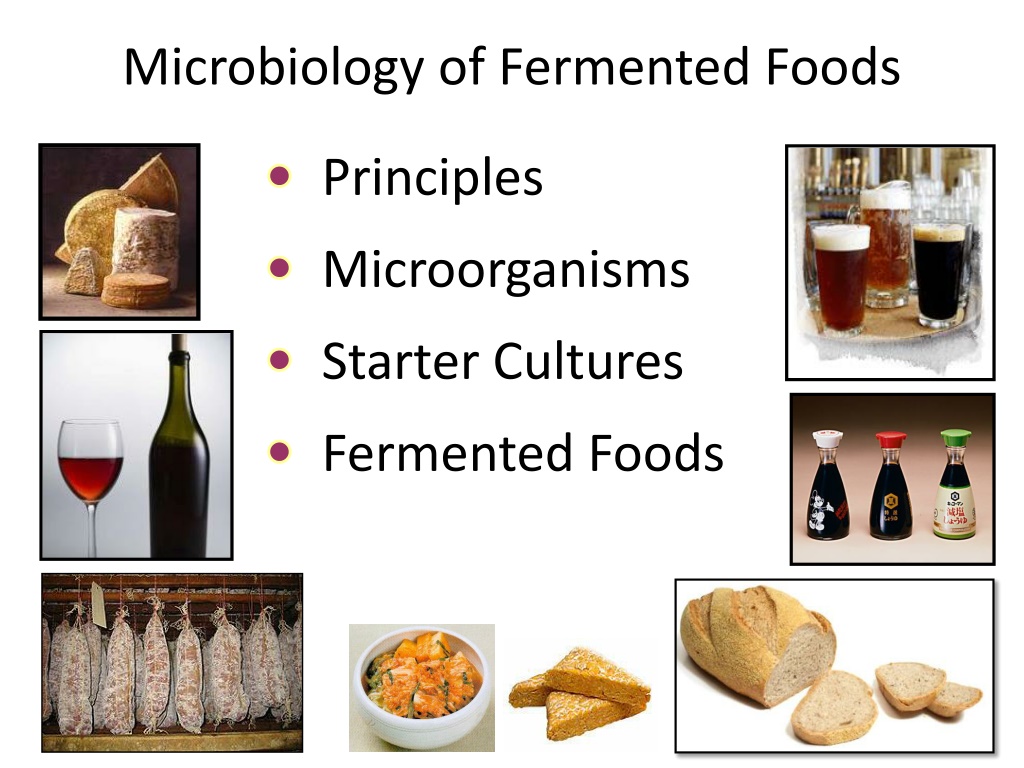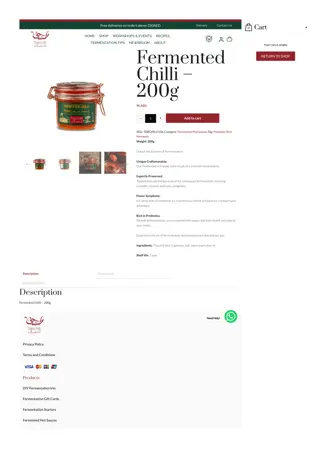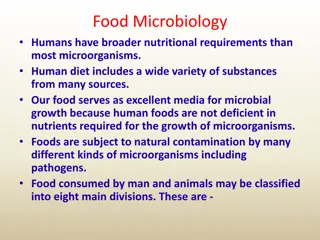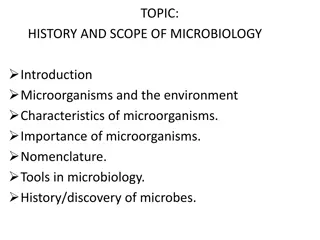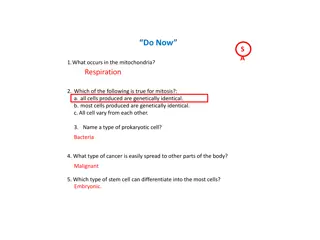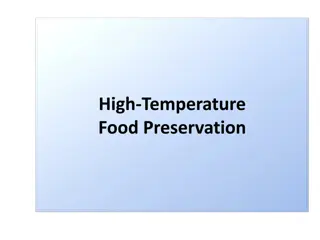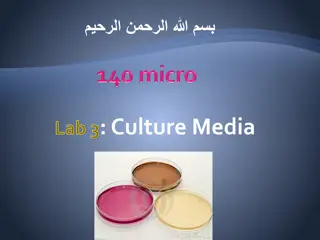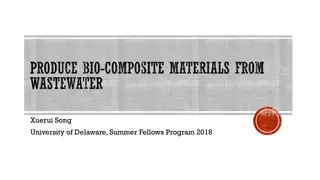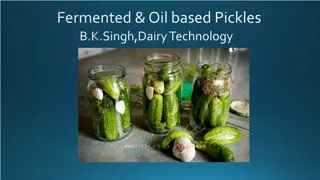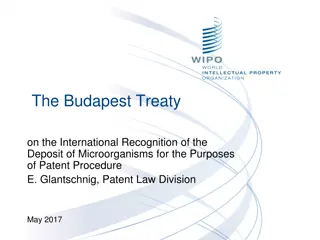Exploring the Fascinating World of Fermented Foods and Microorganisms
Unveil the intricate world of fermented foods, delving into the principles, microorganisms, and starter cultures involved. Discover the fine balance between spoilage and fermentation, the general properties and benefits of fermented foods, and the evolution of the fermented foods industry across time. Learn about the key microorganisms essential in fermentation processes and the various methods of initiating food fermentations. Embark on a journey through the past and present of the fermented foods industry, from traditional to modern practices.
Download Presentation

Please find below an Image/Link to download the presentation.
The content on the website is provided AS IS for your information and personal use only. It may not be sold, licensed, or shared on other websites without obtaining consent from the author. Download presentation by click this link. If you encounter any issues during the download, it is possible that the publisher has removed the file from their server.
E N D
Presentation Transcript
Microbiology of Fermented Foods Principles Microorganisms Starter Cultures Fermented Foods
Fermentation Principles Spoilage versus Fermentation: a matter of control Left to their own fate, perishable foods (meat, milk, fruits and vegetables) perish because growth of micro-organisms is not controlled In fermentation, conditions are controlled so that only certain microorganisms can grow (only those that bring about positive changes).
Spoilage versus Fermentation: a matter of control P-23-712 Exert control by: Acidity and pH Temperature Moisture Salt Substrate availability
General properties of fermented foods Enhanced preservation Enhanced nutritional value Enhanced functionality Enhanced organoleptic properties Unique Increased economic value
Fermented foods industry: past and present Traditional Modern Small scale (craft industry) Large scale (in factories) Non-sterile medium Heat-treated medium Exposed and open Closed and contained Manual Automated Insensitive to time Time-sensitive Exposure to contaminants Contaminants excluded Varying quality Consistent quality Safety a minor concern Safety a major concern
Microorganisms involved in fermented foods Lactic acid bacteria (Lactobacillus, Streptococcus) Other bacteria (Propionibacterium, Brevibacterium) Fungi Yeast (Aspergillus, Penicillium) (Saccharomyces) aspergillus 108-1272 pombe
Initiating food fermentations natural fermentation requires selection wine, sauerkraut, soy sauce backslopping relies on use of a previous batch sausage, sour dough bread, beer, kefir starter cultures defined strains in concentrated form cheese, yogurt, sausage, wine, beer, bread
Lactic acid bacteria A C B 5.0 m E F D 1.0 m A, Lactobacillus delbrueckkii subsp. bulgaricus; B. Lactobacillus brevis; C, Pediococcus pentosaceus; D, Lactococcus lactis; E, Lactobacillus helveticus; F, Streptococcus thermophilus
Common characteristics of lactic acid bacteria Fermentative Low mol% G + C Non-sporeforming Gram positive rods and cocci Facultative anaerobes Catalase negative Non-motile Acid-tolerant
Nutritional requirements of lactic acid bacteria Require sugars for energy Require pre-formed amino acids Some strains require complex nutrients Some strains require anaerobiois
Fermentative pathways in lactic acid bacteria Glucose Homofermentative Heterofermentative lactate (L or D) lactate acetate CO2 ethanol
Genera of lactic acid bacteria Aerococcus Carnobacterium Enterococcus Lactobacillus Lactococcus Leuconostoc Oenococcus Pediococcus Streptococcus Tetragenococcus Vagococcus Weissella
Lactic acid bacteria important in fermented foods Lactobacillus Lactococcus Leuconostoc Oenococcus Pediococcus Streptococcus Tetragenococcus
Phylogeny of lactic acid and other Gram positive bacteria Lactobacillus delbrueckii Lactobacillus johnsonii Staphylococcus aureus Lactobacillus gasseri Bacillus subtilis Lactobacillus plantarum Tetragenococcus halophilus Pediococcus pentosaceus Listeria monocytogenes Lactobacillus brevis Lactobacillus casei Clostridium botulinum Enterococcus faecalis Vagococcus salmoninarum Carnobacterium funditum Streptococcus thermophilus Aerococcus viridans Streptococcus pneumoniae Lactococcus lactis Lactococcus cremoris Weissella cibaria Oenococcus oeni Leuconostoc mesenteroides
Habitats of lactic acid bacteria Genus Dairy Meat Vegetable Fruit + - - - Lactococcus + - - - Streptococcus + - + + Leuconostoc - - - + Oenococcus + + + + Lactobacillus - + + - Pediococcus - - + - Tetragenococcus
General functions of LAB in fermented foods Ferment sugars, reduce pH Synthesis of flavor compounds Texture changes Production of antimicrobial substances
